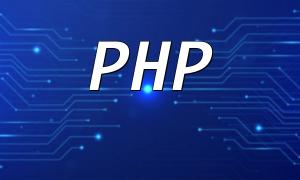PHP is a widely used backend programming language in website development. When building a PHP website, website speed is crucial as it directly affects user experience and bounce rate. This article will explore the relationship between PHP website speed and bounce rate, and provide some optimization strategies and code examples.
Bounce rate refers to the percentage of users who visit a webpage and leave the website without interacting with any other page. Generally, a high bounce rate indicates that users are not interested in the content or that the website experience is poor. Therefore, lowering the bounce rate and improving user experience is a key goal in website optimization.
The speed of a PHP website directly impacts page load times. If a website is slow to load, users may become frustrated and leave, resulting in a high bounce rate. A fast website, on the other hand, can quickly display content, increasing user retention and interaction, which ultimately lowers the bounce rate.
Here are some optimization strategies and code examples that can help improve PHP website speed:
Database queries can be time-consuming. Using caching mechanisms to store query results can avoid repeated database access. Popular caching technologies include Memcached and Redis.
<?php
$key = 'db_query_result'; // Cache key
$data = false; // Variable to store query results
if ($data = $cache->get($key)) {
// Get result from cache
// Result exists in cache, use it directly
} else {
// Result not found in cache, query the database and store the result in cache
$data = $db->query('SELECT * FROM table')->fetchAll();
$cache->set($key, $data, 3600); // Store the result in cache for 1 hour
}
// Use $data for subsequent operations
?>
PHP websites can use static HTML caching or page fragment caching to improve page load speed. Static HTML caching saves frequently accessed pages as static files, reducing the time it takes to generate dynamic pages. Page fragment caching stores frequently changing parts of the page, leaving only the rest of the content to be dynamically generated.
<?php
// Static HTML caching
$pageName = 'index.html'; // Static HTML file name
$htmlContent = $cache->get($pageName); // Get static HTML content from cache
if (empty($htmlContent)) {
// Static HTML file not found in cache, generate it
ob_start(); // Start output buffering
// Dynamically generate page content and store it in cache
echo '<html><head>...</head><body>...</body></html>';
$htmlContent = ob_get_clean(); // Get the buffered output and clean the buffer
$cache->set($pageName, $htmlContent, 3600); // Store static HTML content in cache for 1 hour
}
echo $htmlContent; // Output static HTML content
?>
In PHP websites, appropriate cache headers like ETag and Last-Modified can be used to optimize access speed. These headers allow the browser to cache resources, reducing the number of requests made to the server.
<?php
$lastModifiedTime = strtotime('2022-01-01 00:00:00'); // Last modification time of the resource
header("Last-Modified: " . gmdate("D, d M Y H:i:s", $lastModifiedTime) . " GMT"); // Set last modified time
header("Etag: " . md5($lastModifiedTime)); // Set ETag
if (isset($_SERVER['HTTP_IF_MODIFIED_SINCE']) || isset($_SERVER['HTTP_IF_NONE_MATCH'])) {
if (strtotime($_SERVER['HTTP_IF_MODIFIED_SINCE']) >= $lastModifiedTime || md5($lastModifiedTime) == $_SERVER['HTTP_IF_NONE_MATCH']) {
// Resource has not been modified, return 304 Not Modified status code
header('HTTP/1.1 304 Not Modified');
exit;
}
}
// Subsequent operations
?>
By following the above optimization strategies and code examples, we can effectively improve the speed of a PHP website, reduce bounce rate, and enhance overall user experience. Of course, the effectiveness of the optimizations will also be affected by server performance and network conditions, so it's important to consider all factors for the best results.









